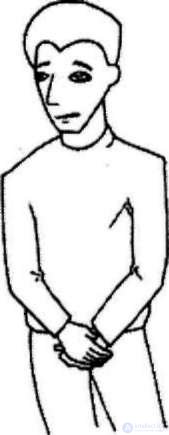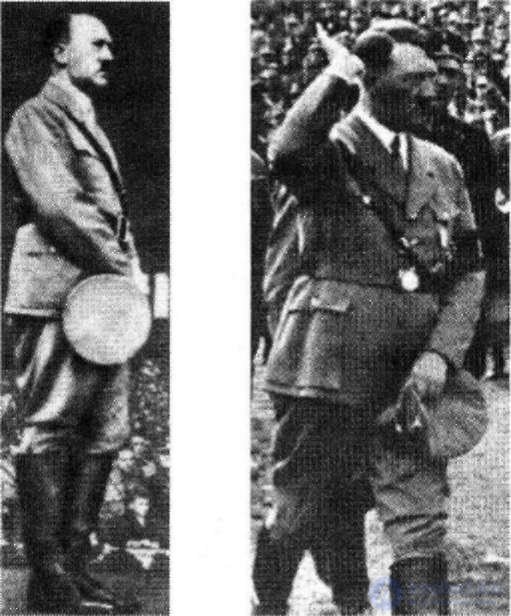In childhood, faced with difficulties or troubles, we rushed into the arms of parents or caregivers. In adulthood, we still want to feel the same pleasant sensations, and this craving is especially intensified during stressful moments. Instead of crossing their arms over their breasts, thereby giving others around their fear, women often resort to a more disguised gesture — partial crossing. One hand closes the case, touching or clasping the other hand. Thus a barrier is formed, and the woman looks as if she is hugging herself. Partial barriers can often be noticed at business meetings when one of the participants is unfamiliar with the others or is simply not confident. In a tense situation, any woman will take a similar position, and will assure that she is "just so comfortable."

This woman is hugging herself just like a mom hugging her in childhood. In men, a partial barrier is expressed in the form of the crossing of lowered hands. As a rule, this position is occupied by men who receive an award or are preparing to give a speech. The pose, which is sometimes called the “posture of the broken lightning,” makes a man feel safe, because in this position he defends his “most valuable asset” and can withstand a frontal attack.

Broken zipper pose In the same position, men stand in line for a charity kitchen or for unemployment benefits. This position betrays their humiliated position. In the pose of a broken "lightning" a man has the impression that someone is holding his hand. Adolf Hitler in public always occupied such a position as to disguise his sexual inferiority (he had only one testicle).
It is possible that in the process of evolution men's hands became shorter, which allows them to effectively protect their manhood. Our close relatives, the chimpanzee, have their hands in this position at knee level.

It is human nature to cover those areas that he considers the weakest and most vulnerable 


Comments
To leave a comment
Body language
Terms: Body language